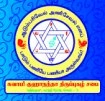

திரு அருணகிரிநாதர் அருளிய
திருப்புகழ்
Sri AruNagirinAthar's
Thiruppugazh

 |  திரு அருணகிரிநாதர் அருளிய Sri AruNagirinAthar's |  |
|---|
| (இந்த வலைத்தளத்தைப் பயன்படுத்துவதற்கு முன்பு எனது முக்கியக் குறிப்பைப் படியுங்கள் - நன்றி). (Please read my important note before using this website - Thank You). |
| திருப்புகழ் 1044 அடை படாது (பொதுப்பாடல்கள்) Thiruppugazh 1044 adaipadAdhu (common) |
 |  | தமிழிலும் ஆங்கிலத்திலும் பொருள் எழுதியது ஸ்ரீ கோபால சுந்தரம் Meanings in Tamil and English by Sri Gopala Sundaram | English PDF அமைப்பு in PDF | ஆலய வரிசை அகரவரிசை எண்வரிசை தேடல் venue list alphabetical numerical search |
|
தனன தான தானான தனன தான தானான தனன தான தானான ...... தனதான ......... பாடல் ......... அடைப டாது நாடோறும் இடைவிடாது போம்வாயு அடைய மீளில் வீடாகு ...... மெனநாடி அருள்பெ றாவ னாசார கரும யோகி யாகாமல் அவனி மீதி லோயாது ...... தடுமாறும் உடலம் வேறு யான்வேறு கரணம் வேறு வேறாக உதறி வாச காதீத ...... அடியூடே உருகி ஆரி யாசார பரம யோகி யாமாறுன் உபய பாத ராசீக ...... மருள்வாயே வடப ராரை மாமேரு கிரியெ டாந டாமோது மகர வாரி யோரேழு ...... மமுதாக மகுட வாள ராநோவ மதிய நோவ வாரீச வனிதை மேவு தோளாயி ...... ரமுநோவக் கடையு மாதி கோபாலன் மருக சூலி காபாலி புதல்வ கான வேல்வேடர் ...... கொடிகோவே கனக லோக பூபால சகல லோக ஆதார கருணை மேரு வேதேவர் ...... பெருமாளே. ......... சொல் விளக்கம் ......... அடை படாது நாள் தோறும் இடை விடாது போ(கு)ம் வாயு அடைய மீளில் ... உள்ளே அடைபட்டுப் போகாமல் ஒவ்வொரு நாளும் இடை விடாமல் போகின்ற மூச்சுக் காற்று முழுமையும் வீணாகாது உடலில் மீண்டும் வந்து (கும்பக முறையில்*) அடங்குமாயின், வீடு ஆகும் என நாடி அருள் பெறா அனாசார கரும யோகி ஆகாமல் ... முக்தி வீடு கிடைக்கும் என்ற உண்மையை ஆராய்ந்து விரும்பி உனது திருவருளைப் பெறாத, ஒழுக்கம் இல்லாத கரும யோகியாய் வாழ்வைக் கழிக்காமல், அவனி மீதில் ஓயாது தடுமாறும் ... இப் பூமியில் எப்போதும் நான் கெட்டு அலையாமல், உடலம் வேறு யான் வேறு கரணம் வேறு வேறாக உதறி ... எனது உடல் வேறு, நான் வேறு, என் (மனம், புத்தி, சித்தம், அகங்காரம் என்ற) கரணங்கள் வேறு - இவைகள் யாவும் வேறு வேறு என்று உதறித் தள்ளி, வாசக அதீத அடியூடே உருகி ... உரைகளுக்கு எட்டாத உன் திருவடிச் சரணங்களில் வீழ்ந்து, உள்ளம் உருகி, ஆரிய ஆசார பரம யோகி ஆம் ஆறும் ... மேலான ஆசார ஒழுக்கம் வாய்ந்த சிறந்த சிவ யோகி ஆகும் பொருட்டு, உன் உபய பாத ராசீகம் அருள்வாயே ... உன் இரண்டு திருவடிகளாகிய ராஜபோகத்தை அருள்வாயாக. வட பராரை மா மேரு கிரி எடா நடா ... வடக்கே உள்ளதும், பருத்த அடிப்பாகம் உடையதுமாகிய மேரு மலையை எடுத்து (மத்தாக) நட்டு, மோது மகர வாரி ஏழும் அமுதாக ... அலைகள் மோதும் கடல்கள் ஓர் ஏழினின்றும் அமுது வரும்படி, மகுட வாள் அரா நோவ மதியம் நோவ ... ஒளி பொருந்திய மணி முடிகளை உடைய பாம்பாகிய வாசுகியின் உடல் (கயிறாக இழுத்ததால்) வலிக்கும்படியும், (தூணாகச் சாத்தப்பட்ட) சந்திரனின் உடல் நோவவும், வாரீச வனிதை மேவும் தோள் ஆயிரமும் நோவ ... தாமரை மலரில் வீற்றிருக்கும் லக்ஷ்மி தேவி விரும்பும் தனது ஆயிரம் தோள்களும்** நோவும்படியும், கடையும் ஆதி கோபாலன் மருக ... கடலைக் கடைந்த ஆதி மூர்த்தியாகிய கோபாலனின் மருகனே, சூலி காபாலி புதல்வ கான வேல் வேடர் கொடி கோவே ... சூலாயுதத்தையும், பிரம்ம கபாலத்தையும் ஏந்துகிற சிவபெருமானது மகனே, வேல் பிடித்த வேடர்களின் கொடிபோன்ற வள்ளியின் தலைவனே. கனக லோக பூபால சகல லோக ஆதார ... பொன்னுலகமாகிய தேவர்கள் உலகைப் பரிபாலித்த அரசே, எல்லா உலகங்களுக்கும் ஆதாரமாக உள்ளவனே, கருணை மேருவே தேவர் பெருமாளே. ... உனது கருணை மேரு மலையைப் போன்று பெரியது, தேவர்களுக்குப் பெருமாளே. |
* இங்கு சிவயோக முறைகள் விளக்கப்பட்டுள்ளன. அதன் சுருக்கம் வருமாறு: நாம் உள்ளுக்கு இழுக்கும் காற்றுக்குப் 'பூரகம்' என்றும், வெளிவிடும் காற்றுக்கு 'ரேசகம்' என்றும் பெயர். உள்ளே நிறுத்திவைக்கப்படும் காற்றுக்கு 'கும்பகம்' என்று பெயர். உட் கொள்ளும் பிராணவாயு உடலில் குறிப்பிட்ட 'ஆதாரங்கள்' (நிலைகள், சக்கரங்கள்) மூலமாகப் படிப்படியாகப் பரவி, மேல் நோக்கிச் சென்று, தலையில் 'பிரம கபால'த்தில் உள்ள 'ஸஹஸ்ராரம்' (பிந்து சக்கரம்) என்ற சக்கரத்துக்குச் செல்லும். இந்த ஐக்கியம் ஏற்படும்போது, அமுத சக்தி பிறந்து, ஆறு ஆதாரங்களுக்கும் ஊட்டப்பட்டு, மீண்டும் அதே வழியில் 'மூலாதார'த்தை வந்து அடையும். இந்த ஆதாரங்களை ஒழுங்கு படுத்தும் வகையில் மூன்று 'மண்டல'ங்களும் (அக்கினி, ஆதித்த, சந்திர மண்டலங்கள்), பத்து 'நாடி'களும் (இடைகலை, பிங்கலை, சுழுமுனை முதலியன) உள்ளன. 'இடைகலை' பத்து நாடிகளுள் ஒன்று. இடது நாசியால் விடும் சுவாசம். 'பிங்கலை' பத்து நாடிகளுள் ஒன்று. வலது நாசி வழியால் விடும் சுவாசம். 'சுழு முனை' இடைகலைக்கும் பிங்கலைக்கும் இடையில் உள்ளது. 'சுழு முனை' ஆதாரம் ஆறிலும் ஊடுருவி நிற்பது. 'இடைகலை'யும், 'பிங்கலை'யும் ஒன்றுக்கொன்று பின்னி நிற்பன. சுவாச நடப்பை 'ப்ராணாயாமம்' என்ற யோக வன்மையால் கட்டுப்படுத்தினால் மன அமைதி ஏற்படும். |
** தேவர்களாலும் அசுரர்களாலும் பாற்கடலைக் கடைய இயலாதபோது, திருமால் தனது ஆயிரம் தோள்கள் கொண்டு கடலைக் கடைந்தார். |
| 'wikisource' reference links for this song இப்பாடலுக்கான 'விக்கிமூலம்' இணையப் பக்கங்கள் pg 3.126 pg 3.127 pg 3.128 pg 3.129 WIKI_urai Song number: 1047 goto wiki alpha list (Please note: Kaumaram.com is NOT responsible for accuracy and contents of external links) |
 | ஸ்ரீ மஹா பெரியவா திருப்புகழ் சபை & சுவாமி குஹாநந்தா திருப்புகழ் சபை (சேலம்) Sri Maha Periyava Thirupugazh Sabha & Swamy Gughanandha Thirupugazh Sabha (Salem) |  பாடகர் பக்கத்திற்கு பாடகர் பக்கத்திற்கு to singer's page |
 | சுவாமி குஹாநந்தா திருப்புகழ் சபை (சேலம்) இப்பாடலின் பொருள் Swamy Gughanandha Thirupugazh Sabha (Salem) meanings in Tamil |  |
 | திரு சபா. மெய்யப்பன் Thiru S. Meyyappan பாடகர் பக்கத்திற்கு to singer's page |
|
(Please note: Kaumaram.com is NOT responsible for accuracy and contents of external links) top |
|
Song 1044 - adai padAdhu (common) adaipa dAthu nAdORum idaividAthu pOmvAyu adaiya meeLil veedAku ...... menanAdi aruLpe RAva nAsAra karuma yOki yAkAmal avani meethi lOyAthu ...... thadumARum udalam vERu yAnvERu karaNam vERu vERAka uthaRi vAsa kAtheetha ...... adiyUdE uruki Ari yAsAra parama yOki yAmARun upaya pAtha rAseeka ...... maruLvAyE vadapa rArai mAmEru kiriye dAna dAmOthu makara vAri yOrEzhu ...... mamuthAka makuda vALa rAnOva mathiya nOva vAreesa vanithai mEvu thOLAyi ...... ramunOva kadaiyu mAthi gOpAlan maruka cUli kApAli puthalva kAna vElvEdar ...... kodikOvE kanaka lOka bUpAla sakala lOka AthAra karuNai mEru vEthEvar ...... perumALE. ......... Meaning ......... adai padAthu nAL thORum idai vidAthu pO(ku)m vAyu adaiya meeLil: If the air that is freely exhaled nonstop every day could be contained without total waste by reining it in and retaining it inside the body (kumbakam*), veedu Akum ena nAdi aruL peRA anAsAra karuma yOki AkAmal: one could attain spiritual liberation (Jeevan mukthi); without carefully researching this fact, and obtaining Your blessing, I do not wish to be an indisciplined yogi of karma (practitioner of actions) and waste my life; avani meethil OyAthu thadumARum: I do not wish to wander in this world recklessly all the time; udalam vERu yAn vERu karaNam vERu vERAka uthaRi: I wish to clearly distinguish between my body, myself and my inner faculties (such as mind, intellect, will and arrogance) and then renounce all of them; vAsaka atheetha adiyUdE uruki: I wish to prostrate with melting heart at Your feet which are beyond the description by words; Ariya AsAra parama yOki AmARum: in order that I follow the sacred and righteous path and become a supreme practitioner of Siva-yOgA, un upaya pAtha rAseekam aruLvAyE: kindly bestow on me the royal bliss of Your hallowed feet! vada parArai mA mEru kiri edA nadA: The huge mountain MEru in the north with a large base was fixed (as the churning axle); mOthu makara vAri Ezhum amuthAka: to extract nectar from the seven seas with lashing waves, makuda vAL arA nOva mathiyam nOva: resulting in extreme pain to VAsuki, the serpent with bright gem-studded hoods, (that was used as the churning rope) and to the moon (used as a fulcrum), vAreesa vanithai mEvum thOL Ayiramum nOva kadaiyum Athi gOpAlan maruka: He churned the seas with His thousand** aching shoulders - which shoulders are the favourite of Goddess Lakshmi seated on the lotus; He is the primordial Lord Gopalan (VishNu); and You are His nephew! cUli kApAli puthalva kAna vEl vEdar kodi kOvE: You are the son of Lord SivA who holds in His hands the trident and the skull of Lord BrahmA; You are the Lord of VaLLi, the creeper-like damsel of the spear-wielding hunters; kanaka lOka bUpAla sakala lOka AthAra: You are the King who protected the golden celestial land and You are the source and origin of all the worlds! karuNai mEruvE thEvar perumALE.: Your compassion is huge like the Mount MEru, and You are the Lord of the celestials, Oh Great One! |
* In this song, several Siva-yOgA principles are explained: The inhaled air is known as 'pUragam' and the exhaled air is 'rechagam'. The retained air is 'kumbagam'. The oxygen that enters the body climbs up step by step through several centres, known as 'chakrAs' and ultimately reaches 'sahasrAram' or 'bindhuchakram' on the top of the skull. At that point of union, nectar flows from that chakrA and seeps through and soaks the six centres of the body and returns to the basic chakrA, 'mUlAthAram'. Three zones (namely, the sun zone, the moon zone and the fire zone) and ten nerves ('nAdis') govern the six centres; the principal nerves are 'susumna', 'idaikala' and 'pingala'. idakala: one of the ten 'nAdis' (nerves), when inhalation takes place through the left nostril; pingala: one of the ten 'nAdis' (nerves), when inhalation takes place through the right nostril; susumna: one of the ten 'nAdis' (nerves), situated between the above two 'nadis', and running through the spinal chord covering all the six centres of 'kundalini'. ('idakala' and 'pingala' are entwined around 'susumna'). If breathing is controlled through a yOgA called 'praNAyAmA', the mind becomes tranquil. |
** When the celestials and the demons gave up churning the milky ocean, Lord VishNu churned it Himself using His thousand shoulders. |
| தமிழில் PDF அமைப்பு ஆலய வரிசை அகரவரிசை எண்வரிசை |
| ... https://kaumaram.com ... The website for Lord Murugan and His Devotees முகப்பு அட்டவணை மேலே home contents top |
Kaumaram.com is a non-commercial website. This website is a dedication of Love for Lord Murugan. PLEASE do not ask me for songs about other deities or for BOOKS - This is NOT a bookshop - sorry. Please take note that Kaumaram.com DOES NOT solicit any funding, DIRECTLY or INDIRECTLY. © Copyright Kaumaram dot com - 2001-2040 COMMERCIAL USE OF MATERIAL IN THIS WEBSITE IS NOT PERMITTED. Please contact me (the webmaster), if you wish to place a link in your website. email: kaumaram@gmail.com Disclaimer: Although necessary efforts have been taken by me (the webmaster), to keep the items in https://kaumaram.com safe from viruses etc., I am NOT responsible for any damage caused by use of and/or downloading of any item from this website or from linked external sites. Please use updated ANTI-VIRUS program to rescan all downloaded items from the internet for maximum safety and security. மேலே top |